Very few German artists were so popular during the Renaissance period than Albrecht Dürer (1471-1528), a man who was in contact with some of the leading artists of the High Renaissance.
He learned a lot from Renaissance masters such as Leonardo da Vinci (1452-1519) and Raphael (1483-1519) and developed a distinctive style of painting that elevated the northern Renaissance to a completely different level.
Let’s take a closer look at some of the most interesting facts about Feast of the Rosary by Albrecht Dürer, one of the artist’s most renowned paintings.
1. It was painted in the first decade of the 16th century
Albrecht Dürer was born in Nuremberg, a large city in the center of modern-day Germany. He initially made his name with woodcut prints which circulated all across Europe and traveled quite a bit during his lifetime.
He visited Italy for the first time between 1494 and 1495 and visited Venice to enhance his skills as a painter. Giovanni Bellini (1430-1576) of the famous Bellini family of Venetian painters is credited with having a profound influence on the young master.
He completed this masterpiece of the Renaissance called Feast of the Rosary in 1506 during his second trip to Italy between 1505 and 1507. This trip eventually culminated in the patronage of Holy Roman Emperor Maximilian I in 1512.
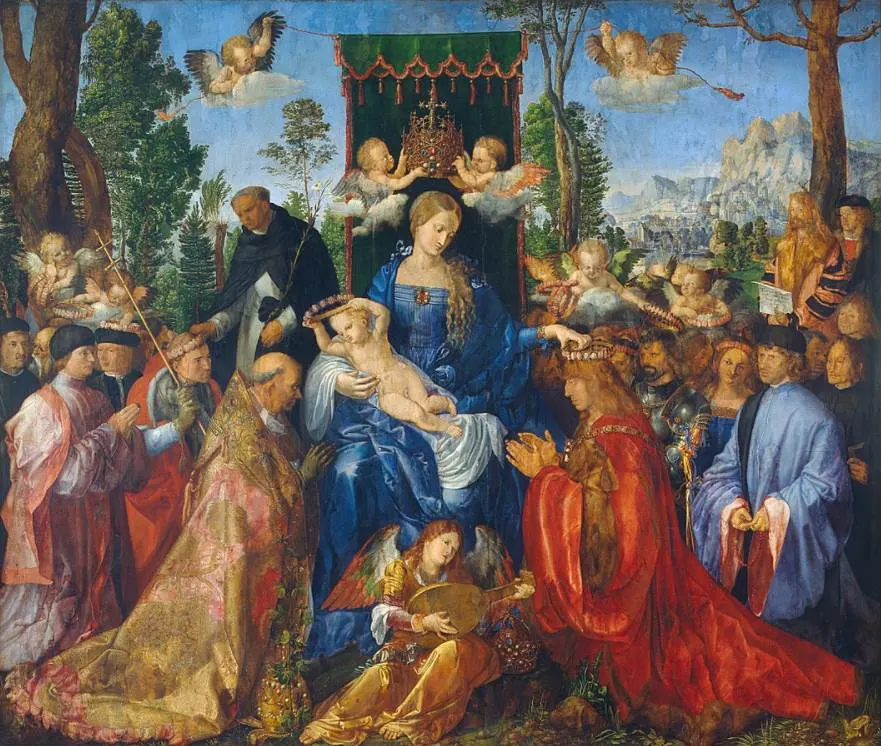
2. It was commissioned by one of the richest men in Europe at the time
The painting was commissioned by a rich banker named Jakob Fugger (1459-1525). The banking business has been profitable ever since it was invented because his estimated wealth at the time of his death was approximately 2 million guilders, the equivalent of well over $300 billion today.
The Augsburg-based banker commissioned Dürer to paint the Feast of the Rosary to decorate the German national church in Venice. This church is called “San Bartolomeo” and is located just near the Rialto Bridge in the heart of the city.
Fugger was also the intermediary between Maximilian I and Pope Julius II, both great patrons of the arts who skyrocketed the German artist’s career.
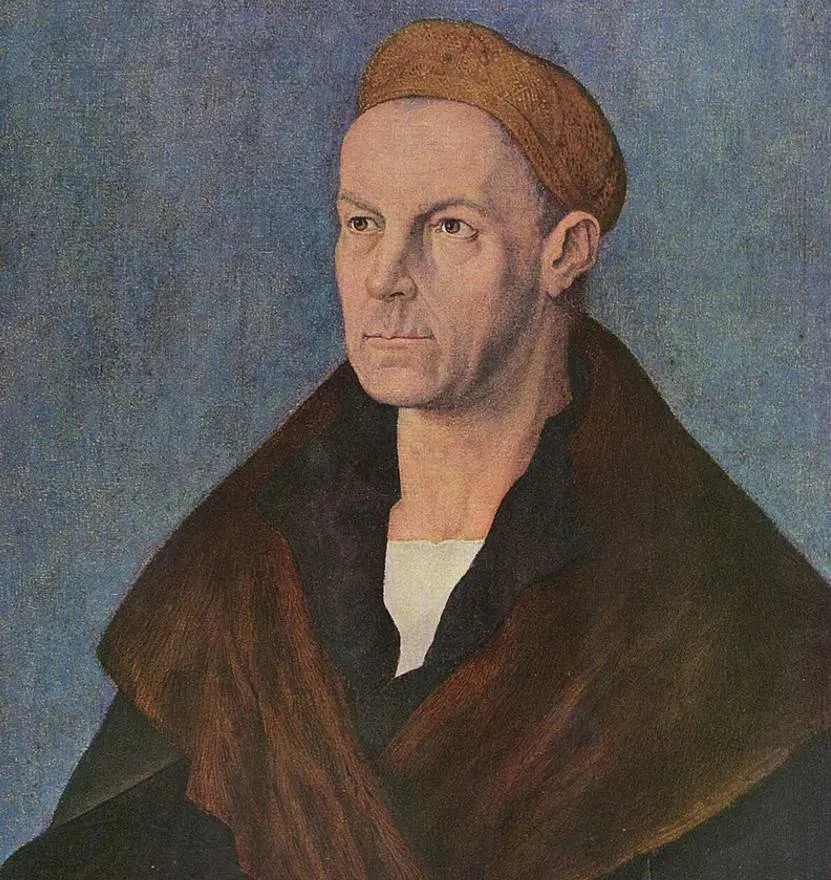
3. The composition resembles that of famous Flemish artists

The German community that lived in Venice in the early 16th century was especially devoted to Our Lady of the Rosary, the reason why this subject was chosen.
The composition of the painting is therefore centered around the Virgin Mary who sits on a throne while holding her baby Jesus Christ. Two angels can be seen just above her head as they are about the place an elaborately decorated golden crown full of pearls and gems onto her head.
The overall composition of the painting, which completely revolves around the enthroned Virgin Mary, is similar to that used by the Great Flemish artists of the northern Renaissance in the 15th century. These painters are referred to as the “Flemish Primitives.”
Some of the most renowned artists of this period were Jan van Eyck (1390-1441), Rogier van der Weyden (1400-1464), and Hans Memling (1430-1494).
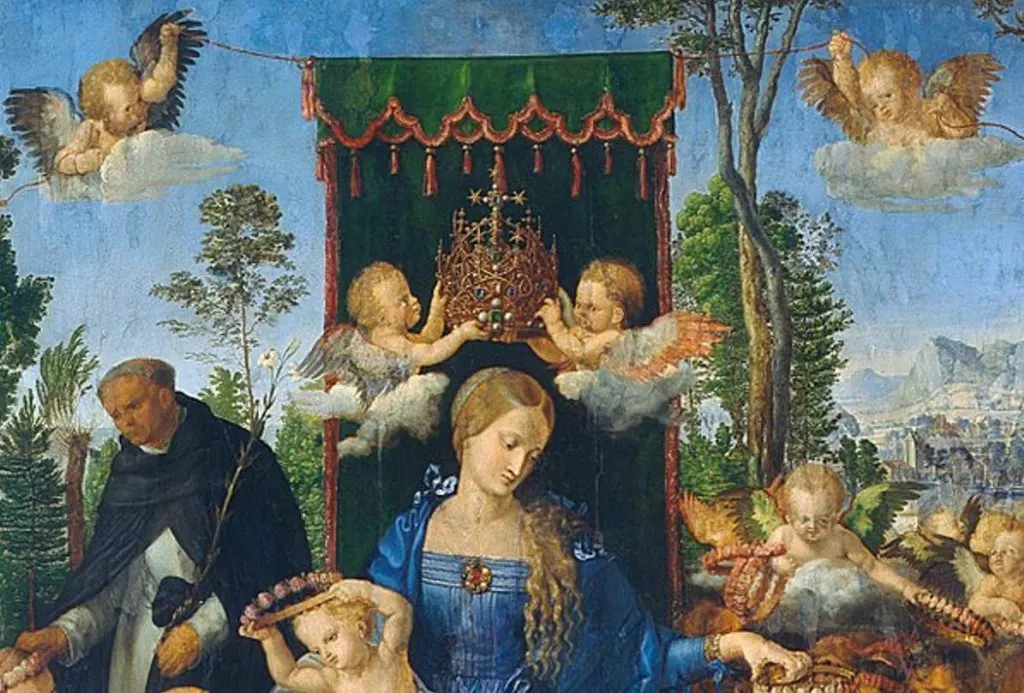
4. The two rows of people are led by two important men at the time
Two rows of people can be seen on both sides of Mary’s throne and she is placing a crown on the head of the figure to her right. Multiple contemporary figures were included by the artist and the background is coved with an idyllic Alpine landscape.
This man to Mary’s right represents Holy Roman Emperor Frederick III (1415-1493) who Dürer depicted with the face of his son Maximilian I, the artist’s most prominent patron. He probably based this image on a sketch he owned of the Emperor back then.
The man to Mary’s left is Pope Julius II, the great patron of the arts of the High Renaissance who employed some of the most famous artists in history.
At Mary’s feet, we can see an angel playing the lute, most probably influenced by the works of Giovanni Bellini who often included a similar figure in his paintings.
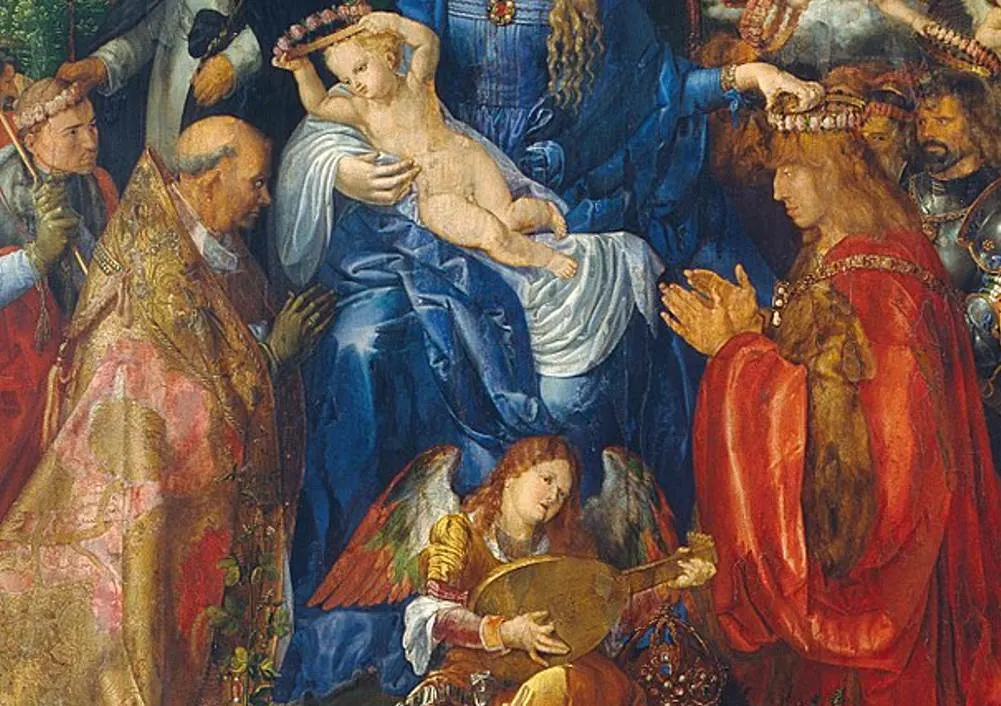
5. The artist included a self-portrait into the painting as well
The distant landscape is a lot more detailed than it initially appears to be as it features both mountains and towns. IN the top right corner, next to a tree, we can see a self-portrait of Albrecht Dürer.
We know this is Dürer because the figure is holding a note featuring the artist’s signature and the amount of time he had to complete the work before May 1506, which was 5 months.
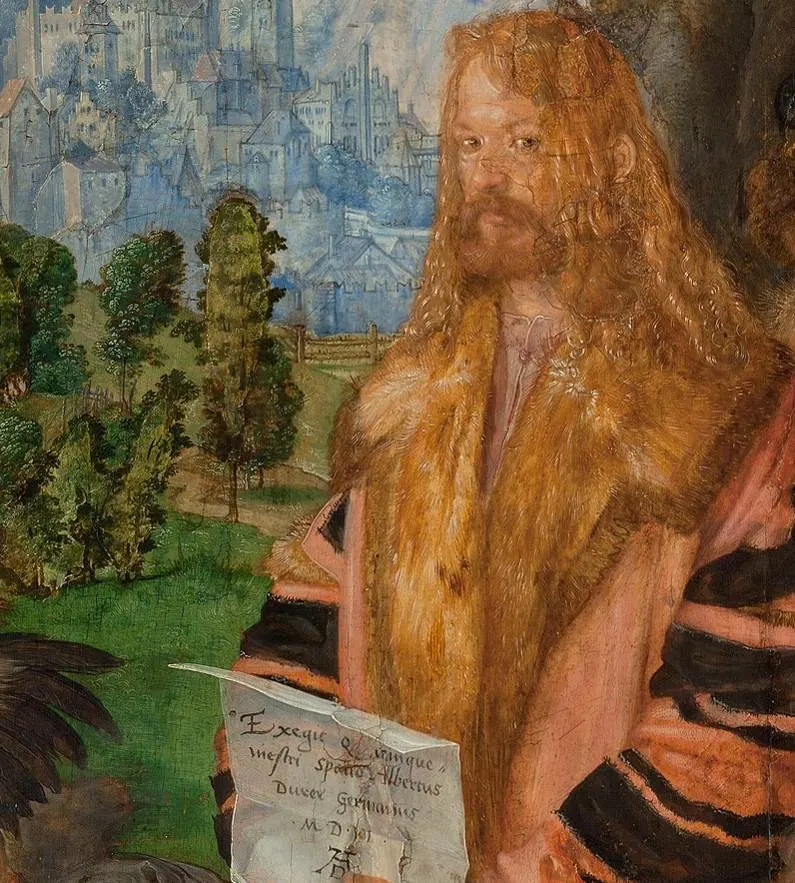
6. Dürer completed the work in Venice and it hung there for 100 years
The note in Dürer’s hand mentions that he only had 5 months to complete the painting, but he didn’t manage to meet this deadline.
When some of the most prominent members of Venetial society, including noblemen, government officials, and some unidentified artists (probably including Bellini), visited the artist in September 1506, he was still working on the finishing touches.
This group of people included the Doge, the leader of the Republic of Venice. When he saw this magnificent work of art he offered Dürer a job as the official painter of Venice. According to his account, he respectfully declined this offer.
The painting was installed in the San Bartolomeo Church that it was initially commissioned for and hung there until 106. This was the year that Rudolf II (1552-1612) bought it and brought it to Prague.
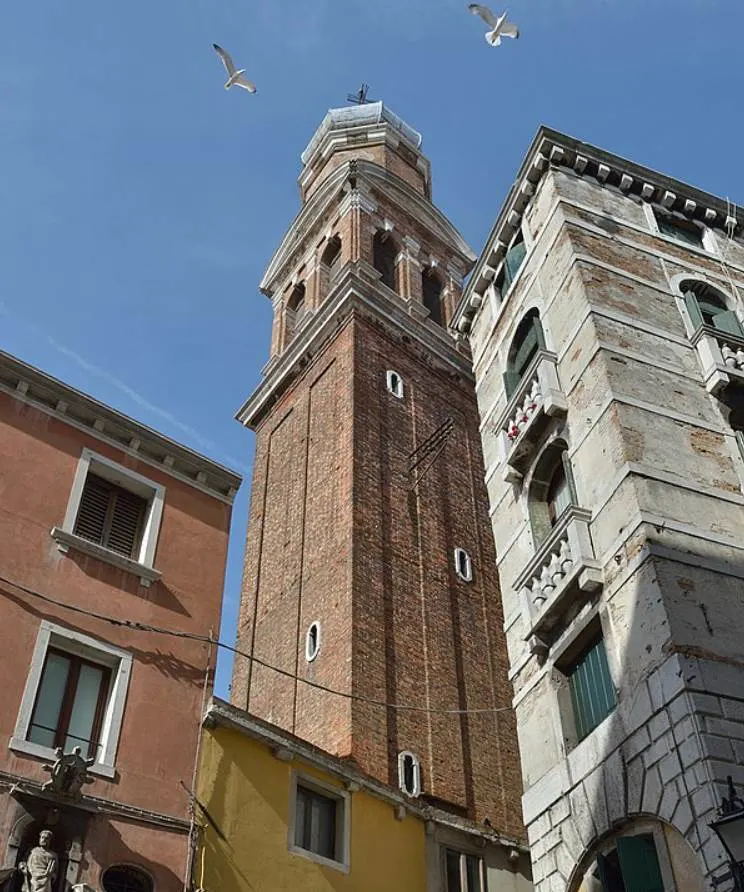
7. How big is Feast of the Rosary by Albrecht Dürer?
5 months was quite a tight deadline to complete such monumental work of art, especially considering the number of figures and detail included by the artist.
The oil on panel painting is quite big as well as it has dimensions of 161.5 × 192 centimeters (63.6 × 76 inches).
8. Where is the painting located today?
The painting was brought to Prague by Holy Roman Emperor Rudolf II in 1606 and it has never left the city since. It was installed at the Strahov Monastery, an amazing Baroque building just west of the immense Prague Castle.
It stayed here for multiple centuries until it was moved to the Rudolfinum, a neo-Renaissance building that was completed in the year 1885 that is used as both a performing arts center and an art gallery.
Today, it’s one f the major attractions at the National Gallery Prague, a museum that was established in 1796 and which has become one of the most renowned museums in Central Europe.
The collection of this museum is housed in several historic and new buildings in Prague, and Feast of the Rosary by Albrecht Dürer is part of the collection of Old Masters housed at the Sternberg Palace in the city’s Castle District.

